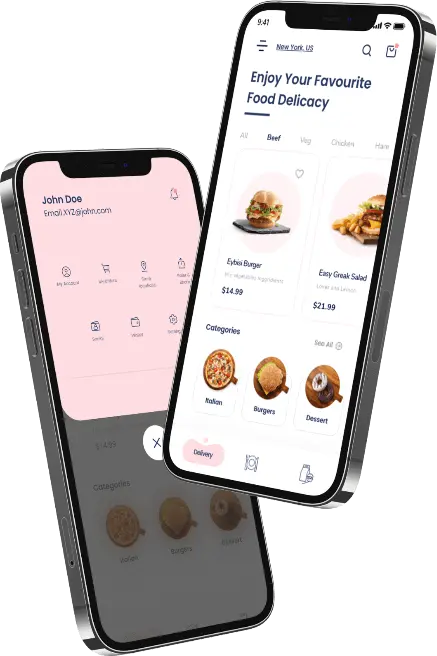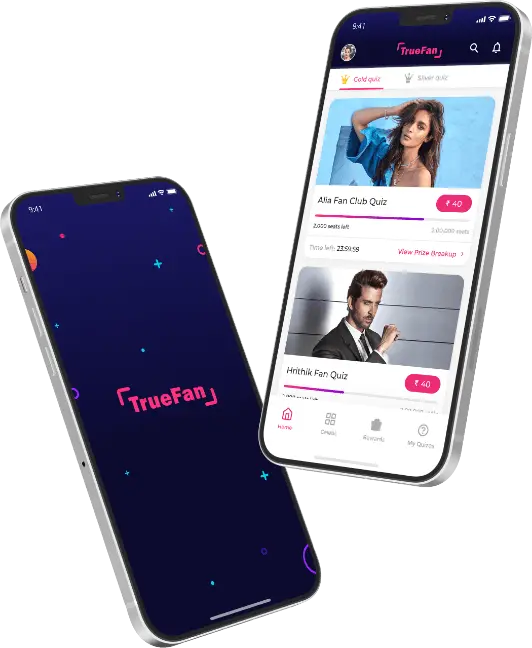2 Jan 2023
Web Application Development: Best Practices in 2023
Surbhi Bhatia

As consumers’ expectations change and evolve about their mobile and online experiences, brands must constantly reevaluate and deliver the experiences they promise. Mobile experiences are more important than ever in light of the COVID-19 epidemic. Unfortunately, 52% of customers believe poor mobile experiences make them less likely to recommend a company. This raises the responsibility of web application development companies that offer these services.
Mobile apps have been the dominant topic in mobile experience discussions for years. But, all that is changing. Innovations in web apps deliver native-like user experiences today and into the future, positioning web apps to be the dominant app landscape in the future.
This guide will give an overview of web app development. It will also cover the most important types of web apps and provide a high-level view of the development process. Finally, the guide will end by demonstrating why web app development is still a priority for brands like Netflix, Twitter, and Google.
What is a Web Application?
A web app is an interactive app that utilizes web development technologies, and end users can seamlessly access the same from their browser.
Web apps use standard back-end and front-end development technologies. Notably, web apps are closely related to websites. Not only this, but Web app development and web design share a number of parallelisms.
For example, web app developers use HTML, CSS, and JavaScript on the front end. Additionally, web app developers might utilize the same server-side language for the development of websites, including Ruby and Python on their back end.
Any device can be used for web apps, but in an alternate manner than traditional websites.
The Comparison of a Web app and a Website
Web apps are communal, while websites’ primary goal is to grant knowledge.
It is difficult to distinguish one from another, but you will see why it matters once you recognize the differences.
Learning about mobile app development can be a great way to learn about web app development. But do you know the differences between Native and Hybrid applications?
Also Read – How to Choose a Mobile App Development Company?
Native apps are mobile applications that have been designed explicitly for their platforms. As a result, developers must use native technologies to access them, such as the Swift programming language on iOS or the Java programming language on Android.
Native apps have a disadvantage. What is it? Native developers have to create different apps for different platforms. In addition, each app will need a different codebase and language.
Hybrid apps provide a solution for quicker development. Hybrid apps combine native and web technologies, allowing for multi-platform compatibility.
Web apps can be neither of these. Web app developers only emphasize web technologies. On the other hand, Web applications prioritize user interaction, unlike a website.
Users may want to access information by going through traditional websites. In case of online purchases, they may also provide their email address and other personal information.
A web app improves the user experience (UX), so users can do more. These interactions require web apps to be dynamically updated.
You’ll find that Twitter and Facebook are more engaging than visiting the local pizzeria’s website. This is because the former are web apps, while the latter are websites.
Types of web applications
Although there is a lot of differentiation between web apps and mobile apps, it is possible to choose different web apps by their functionality and flexibility.
Application for static web
Cached and pre-rendered content is used to create static web apps. This content is then forwarded to the browser in the absence of personalization or interactivity. Any changes to the page appears only after loading.
1. Dynamic Web Applications
Dynamic web apps combine server-side and client-side processing to generate code in real-time. This allows the page display to be changed whenever a page refreshes or new input is added. This type of mobile app requires a database to store information.
The sub-types of dynamic web apps available for other web apps include all the others.
– Single-page applications
A single-page application continuously keep in touch with the user by dynamically introducing modifications to the current page in place of loading new pages from a web server. This is because SPAs execute logic on the browser and not the server.
– Progressive Web Apps
A progressive web application is a website that behaves and looks like a mobile app. When building a progressive app, both mobile app development practices and web development practices are important.
PWAs can be integrated to develop mobile applications and are receptive across all devices. They are also easily discoverable, connectable, app-like, safe, shareable/linkable, push notifications, and – the gem differentiator – can be added as an icon to the app drawer. A PWA functions almost identically to a mobile application, but it doesn’t need to be installed on the user’s device or listed in an APP Store.
Do you want to learn more about Progressive Web App Development cost? Get in touch with us today!
2. Content Management System
Content management systems allow users to create content from scratch without technical knowledge. The CMS makes it feasible to fabricate a website, for example. However, the emphasis lies on the forward-facing elements of the web page and not the code.
A CMS is a software platform that automates the tasks of managing and publishing content online. For example, it can upload content, format it for a webpage, and perform backstage tasks such as improving SEO. WordPress is a common example.
Tools to Develop Mobile Web Apps
The best tools for the job” is an old saying that applies to all areas of software development. This tutorial will familiarize you with the most popular tools for mobile web design. However, it is also certain that other tools fit better with your needs and resources.
1. JavaScript Mobile Web App Frameworks
Mobile web development can come up with numerous hurdles, including cross-browser compatibility and inconsistent HTML and CSS in mobile browsing. Frameworks have been created based on HTML5/CS3 to address these issues. They are designed to work on a variety of devices, including tablets and smartphones. In addition, these frameworks for mobile web browsing are light, which allows you to browse quickly on mobile devices without losing the design and feel of your website.
We can now look beyond the mobile landscape and mention jQuery, a popular JavaScript framework. If you are familiar with the desktop version of jQuery, we recommend jQuery mobile for your web application. The widget library converts semantic markup to a gesture-friendly format. This makes operations on touch screens simple. In addition, this latest version contains a light code base with many graphical elements that can improve your User Interface.
Sencha Touch is also rapidly growing in popularity. It is fast and reliable and creates a mobile web interface that feels and looks like a native app. Sencha’s ExtJS JavaScript library is the basis of its fully-featured widget library.
Listed below are a few key differences between Sencha Touch and jQuery Mobile.
- Design and feel. In general, a Sencha Touch app looks crisper and more professional than a jQuery mobile app. However, it is important to keep in mind that these responses are highly subjective.
- Extensions. are highly extensible. Sencha Touch, on the other hand, is more closed-source.
- Device support. JQuery Mobile aims a wider cross-section of devices than Sencha Touch.
- HTML is different from JavaScript. JQuery is mainly HTML-centric (i.e., extending and manipulating HTML in JavaScript), while Sencha Touch coding relies entirely on JavaScript. This is another example of why it’s important that you consider the skills of your development team when choosing technology.
- External dependencies. Sencha TResponsive Frameworks and Mobile Web Applicationsouch does not have any external dependencies.
- The learning curve. Many developers find jQuery’s ramp-up time to be shorter than Sencha Touch. This may be due to the large number of web developers who already know the standard jQuery libraries.
2. Responsive Frameworks and Mobile Web Applications
Many responsive frameworks exist, but Bootstrap and Foundation are the most widely used. In short, responsive frameworks simplifies and streamlines web-based responsive User Interface design and application, encapsulating the most common layouts and UI paradigms into a reusable, performance-optimized framework. Many of these frameworks, largely based on CSS or JavaScript, are free to download and easy to customize. It is unlikely that you will have very specific requirements. In case your requirements are not listed here, these frameworks can be utilized to eliminate the amount of work required to design and implement your mobile website.
When comparing the top two options, Bootstrap or Foundation, there are some key differences that you should consider.
- Targeted platform. Although Bootstrap supports mobile, tablet, and desktop devices, it is primarily designed for desktop use. Foundation is designed to work with a wide range of screen sizes.
- Browser compatibility. Both Foundation and Bootstrap support the most recent versions of most browsers.
- A variety of layouts and components. Foundation offers a much larger selection of UI elements.
- Auto resizing. Bootstrap supports only a pre-defined set of grid sizes based on a set of screen sizes.
Testing and Debugging Mobile Web Apps
Mobile web app debugging can be difficult and frustrating.
Mobile web development projects have a clear advantage over native app development because you can use standard browser-based tools to debug your applications. Chrome, with its DevTools, is my preference for remote debugging. Firefox with Firebug and Opera’s Dragonfly tools are other options.
Choosing Intelligent Mobile Development Solutions
The demand for high-performance, user-friendly mobile applications will continue to rise with the rapid increase in the number and sophistication of smartphones on the market. Therefore, it will be crucial to continue developing these applications efficiently and intelligently.
There are many factors to consider when choosing between native and mobile web apps for mobile devices. While each has its advantages, mobile web apps are often the most cost-effective and time-efficient option. If you decide to take that route, this tutorial will help you get there quickly and efficiently.
7 Steps to Developing Web Applications
Web application development services are no different from any other type of software development. However, successful development is almost always driven by a great team of mobile app developers and well-defined processes.
1. Define your problem
The first step to developing your web app is to identify the problem or reason you want your customers to use it.
Although people are always coming up with new ideas, is it worth the effort to implement an idea if it doesn’t offer clever solutions for an existing problem?
2. Plan your Workflow
The workflow is a manner of organizing the different stages of your web app development. First, consider what your web application will look like and how you can meet these requirements with your budget and resources.
Software development is a business-oriented process. Therefore, your workflow should be both technical and business-oriented.
You can adjust the time frame in which your web app development should be completed. Also, don’t forget to Develop algorithms that’ll allow you to move your development in a systematic manner.
3. Create a prototype of your web app
To better understand the final product, prototyping is creating a functional but incomplete application. A prototype in software development is similar to a Minimum Viable Product.
4. Validate your prototype
Your prototype must be compelling enough to enable you to corroborate your ideation and continue your project.
Validate your prototype by showing potential users your web app. Get feedback and continue to improve.
5. Create Your App
To build your app, you will need to research the software that is required. You should consider which technologies and front-end frameworks can be used to meet the needs of your project.
Now it’s time for you to get started developing. Finally, your web app is ready!
6. App Testing
Testing your web app shouldn’t be an issue. Software development teams often test the software thoroughly throughout the development process to make sure that the web application is entirely bug-free.
Quality assurance is also an important aspect of developing a web app. Again, this should be done before your app is released to the public.
7. Host and Launch Your Web Apps
A web app must be hosted on the same web server as a website. Therefore, to put your web app in action, you will need to purchase a domain name as well as a cloud hosting provider.
Web Application Design: Best Practices in 2023
Now that we know what web applications are, let’s get on! What are the top web app development practices for 2023? What are the best practices for developing a web app that is successful using all available technologies?
These steps are highly recommended if you plan to launch an app in 2023.
1. Select the right tech stack
The first step to building a web application that is successful is choosing the right technologies. It can seem difficult to choose the right technologies, given the variety of web application frameworks, libraries, programming languages, and servers available. We will discuss the best options later in this article to help you decide.
2. Create attractive design
You must offer a unique design and an intuitive interface if you want to attract new users. Your app will be more loved and appreciated if it has a well-planned navigation system and is easy to access. Your app’s vibe (which includes fonts and colors) must be in line with your target audience.
3. Provide great UX
Although a unique design can attract customers, the user experience is what will keep them loyal and satisfied. Great satisfaction also leads to referrals. If your goal is to grow your app and see growing numbers, it’s important to constantly test and optimize your UX and respond to your users’ needs.
4. Get great speed and performance
Google reports that bounce rates increase 32% when page loading times go from one to three seconds. Apps that are able to perform well will be successful because of this. Page load speed is dependent on many factors, such as the tech stack and content, website architecture, dynamic elements, and web content. It is worth investing in constant optimization and testing of your web application to speed up page load times.
Conclusion
Web app development is a subset of web design that is not quite what you expect from a website or a mobile application.
There are many types of web applications. Apart from the revolutionary progressive web apps that can change everything, there are also client-side and server-side apps, as well as single-page apps.
Web apps are created using a combination of front-end and backend technologies. This process, along with the software development process itself, does not differ from standard web development.
It’s likely that you already know about many popular web apps used frequently across the internet.
Are you interested in building your web application?
Techugo: a leading web and mobile app development company is always available! For more information and to build your web app, contact us today.
Have fun with innovation
Get in touch.
Write Us
sales@techugo.comOr fill this form















